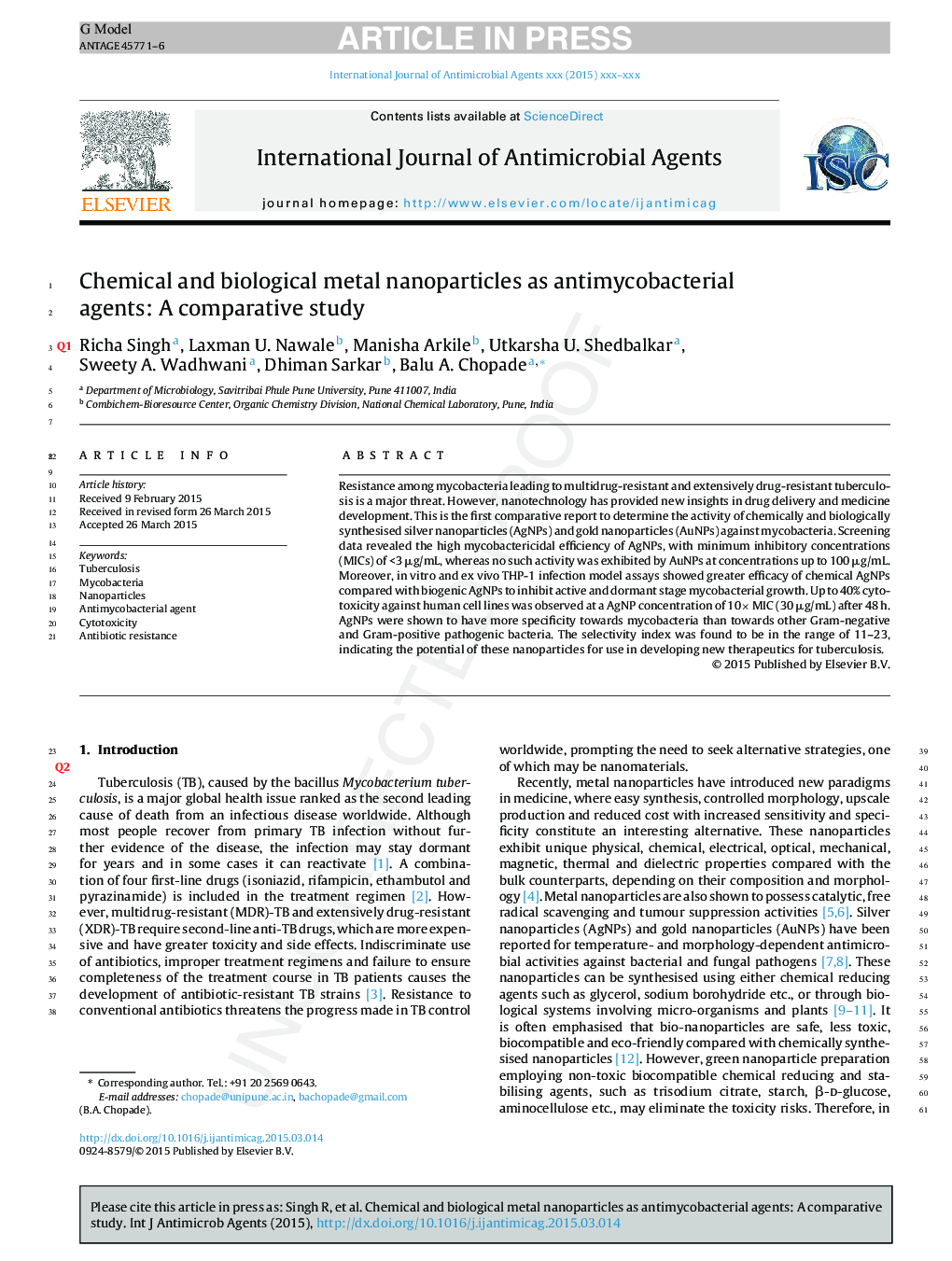| Article ID | Journal | Published Year | Pages | File Type |
|---|---|---|---|---|
| 6117717 | International Journal of Antimicrobial Agents | 2015 | 6 Pages |
Abstract
Resistance among mycobacteria leading to multidrug-resistant and extensively drug-resistant tuberculosis is a major threat. However, nanotechnology has provided new insights in drug delivery and medicine development. This is the first comparative report to determine the activity of chemically and biologically synthesised silver nanoparticles (AgNPs) and gold nanoparticles (AuNPs) against mycobacteria. Screening data revealed the high mycobactericidal efficiency of AgNPs, with minimum inhibitory concentrations (MICs) of <3 μg/mL, whereas no such activity was exhibited by AuNPs at concentrations up to 100 μg/mL. Moreover, in vitro and ex vivo THP-1 infection model assays showed greater efficacy of chemical AgNPs compared with biogenic AgNPs to inhibit active and dormant stage mycobacterial growth. Up to 40% cytotoxicity against human cell lines was observed at a AgNP concentration of 10à MIC (30 μg/mL) after 48 h. AgNPs were shown to have more specificity towards mycobacteria than towards other Gram-negative and Gram-positive pathogenic bacteria. The selectivity index was found to be in the range of 11-23, indicating the potential of these nanoparticles for use in developing new therapeutics for tuberculosis.
Related Topics
Life Sciences
Immunology and Microbiology
Applied Microbiology and Biotechnology
Authors
Richa Singh, Laxman U. Nawale, Manisha Arkile, Utkarsha U. Shedbalkar, Sweety A. Wadhwani, Dhiman Sarkar, Balu A. Chopade,
